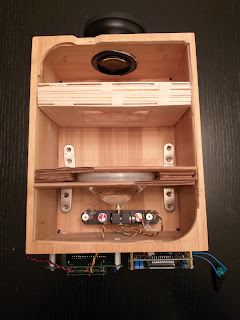The basic system of the RED LIGHT RETINA DRAW (RLRD) consists of six parts:
1. Light Source: Laser Diode
2. Condenser lens
3. Fresnel lens
4. LCD
5. Camera or a media source
6. Delivery Optics
List of components of this First Rough Representation:
-49MM 0.43x Altura Photo Professional HD Wide Angle Lens
-5 Inch 800x480 TFT LCD Display for Raspberry Pi
-Fresnel Lens, 100x100mm, Focal Length 50mm
-Thorlabs LD2000R and EK2000 Evaluation Kit Diode Driver
-Thorlabs HL6312G - 635 nm, 5 mW, A Pin Code, Laser Diode
-Condenser Lens 100mm Beam Angle: 60°
System parameters:
-Output voltage of power supply: 8.95 V DC
-Output voltage proportional to the limit current with a transfer function of 40 mA/V on Thorlabs Diode Driver: 1.50V DC ---> 60 mA ---> 3 mW
-Output power from Wide Angle Lens: We use a Pocket Laser Power Meter. It only has 1mW resolution. If it doesn't register on this meter, that's a pretty good sign.
-Temperature inside the system: 72F(equivalent to room temperature).
We tried connect a Nikon D3200 to the LCD, after that we used a Vantrue N1Pro camera. Both attempts failed to produce any image on LCD.
Result: Failed!
Reason: The LCD does not support signal from said cameras.












